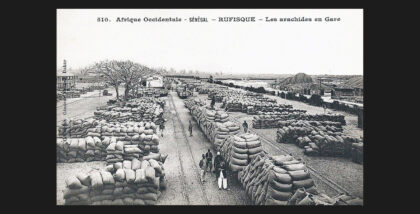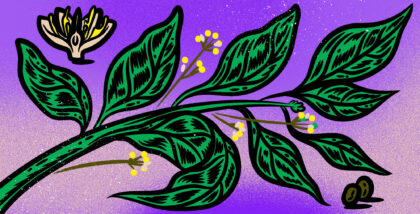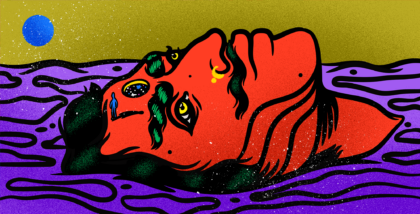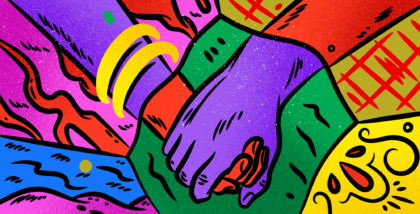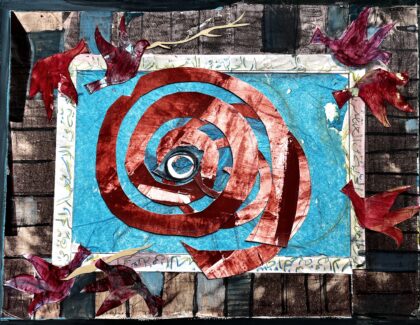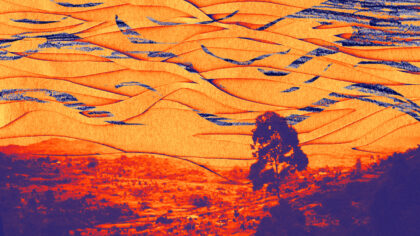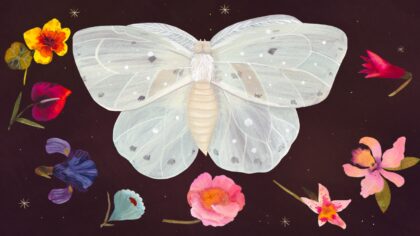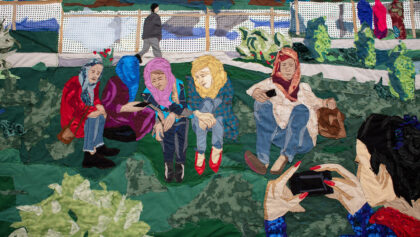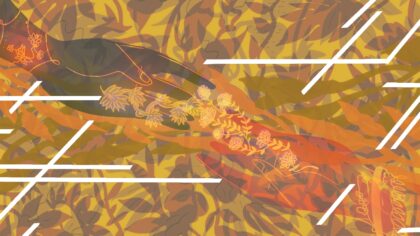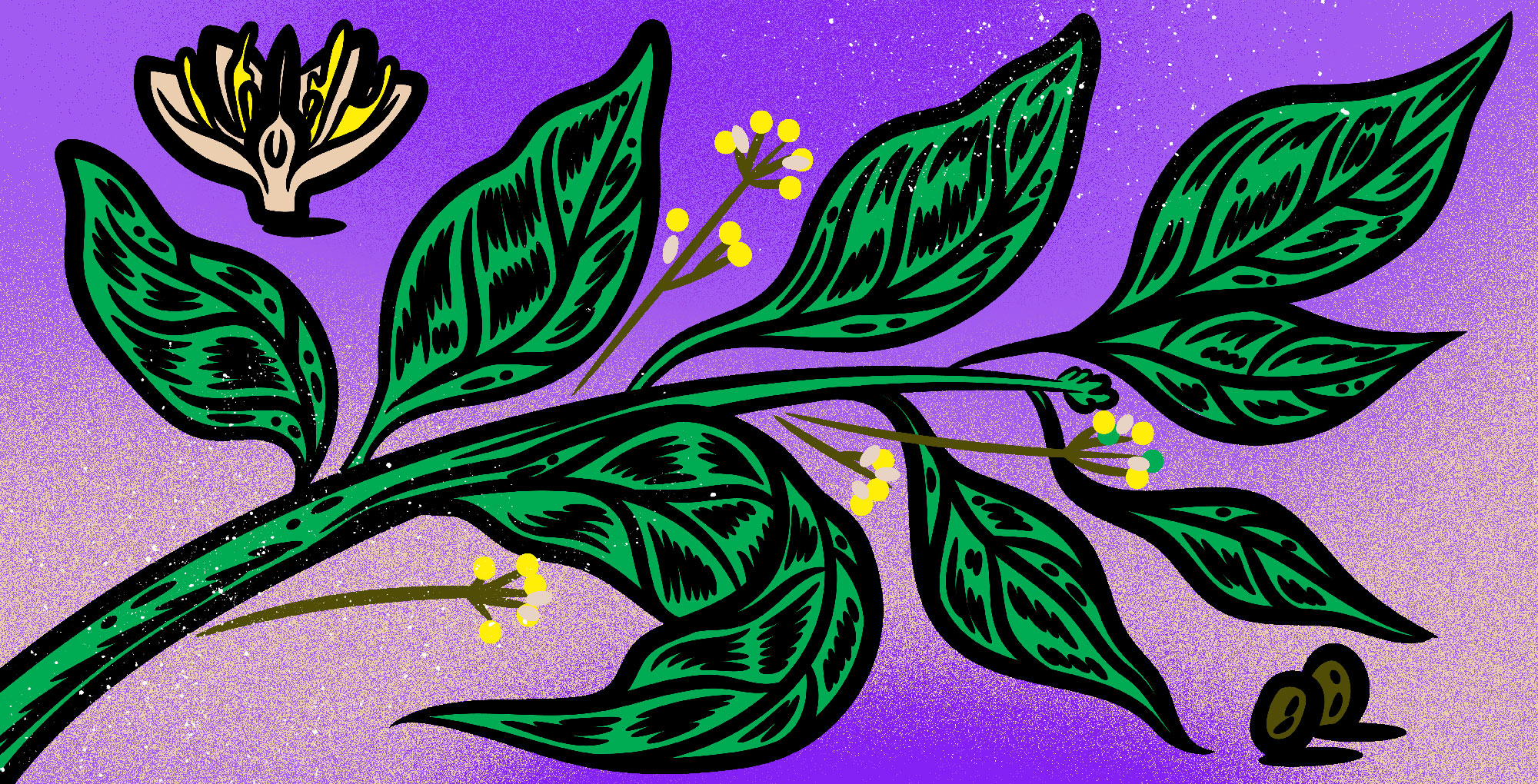 Art by Osheen Siva
Art by Osheen Siva
Camphor Wars, Formosa
British sailor William Pickering was just 22 years old when he was recruited by an old friend to a post with the Chinese government’s Maritime Customs Office in 1862. An administrative position in the lush forest-covered mountains of Formosa, the largest of Taiwan’s 168 islands, had far more appeal than his life aboard a trading ship wandering the China seas. And as he would soon realize, his timing offered a rare opportunity. It would correspond with a loosening of China’s trade with England, which Pickering would wedge open even further.
The Qing Dynasty of China had ruled over Taiwan since 1683 and held a tight grip on products like silk, porcelain, and most importantly, tea, which were coveted by British appetites at the time. China was not interested in the United Kingdom’s products, so the British had little bargaining power and had to rely on military threats for persuasion, and, crucially, an opium smuggling operation, to trade for their tea. When Chinese authorities attempted to suppress the illegal trade and halt its diplomatic arrangements with Britain, the British initiated two Opium Wars. In 1860, the second war ended with Chinese defeat, which meant that the British could now export their opium into China legally.
As a customs officer for China just two years after the end of the Opium Wars, Pickering knew that many British merchants were making fortunes from driving goods through these newly acquired official channels. Here, he saw an opportunity. He weighed his options among the potential lawful dealings at his disposal and resolved that it would be more lucrative to take a legally dubious route. He prepared to smuggle out one of the island’s most lucrative and most regulated resources at the time: camphor resin.
Camphor resin is a white crystalline substance made from the bark of the camphor tree—Cinnamomum camphora—a robust evergreen with a sprawling canopy that is native to highlands across Asia. To make the resin, its gray-brown bark is chopped into wood chips, which are then cooked in a kind of distillery to produce vapor. The resulting gas is then condensed into a highly pungent solid.
Camphor resin stimulates the body’s nervous system and offers a cooling sensation that is both numbing and soothing. And in 19th century England, it was in high demand. Chemists and pharmacists relied on it as a treatment for a variety of ailments, from wounds and itchy skin to respiratory conditions. Camphor creams, lotions, tinctures, and oils flooded the market. In the 1870s, camphor resin also became a key ingredient in celluloid, an early form of plastic that is best known for its use in photo and film stock. The camphor tree only grew in a few places in the world at the time, so the competition for control of camphor resources increased. And Taiwan had the world’s most readily available stock of camphor trees.
The new channels for British commerce with China also meant new paths for the legal trade of camphor, albeit restricted by a Chinese government monopoly; foreigners could only buy the resin through official camphor offices, where they were obliged to pay high rates and arrange for export through select ports of sale. The trees grew largely on Indigenous land, and the Qing administrators forced Formosans to work the camphor stills for the imperial dynasty and threatened those who cut down the large trees for their own use with lethal punishment. As the tree stocks became exhausted on the coasts, the portable distilleries moved deeper and deeper into the hilly forests of Indigenous land in search of the altitude-loving camphor trees, far from the only ports where foreign traders could legally buy this resource. Middlemen were notorious for adding extra fees on top of the already costly taxes exacted by the camphor office.
Few British officials had approval to enter Formosa’s heavily armed timber areas where jungle laboratories engaged in the slow reduction of camphor bark into treasure. This was where Pickering saw an opening. As an employee in service to the Chinese empire, Pickering had enough access to secure cheap camphor at a reasonable price and the know-how to export it just as cheaply by bypassing the official channels.
In 1868, Pickering developed a plan to sneak out 15,000 kilos of the coveted camphor crystals for a British firm through an unauthorized port. After bribing a fisherman with a chest of his own stash of opium, Pickering borrowed a boat and hoped to shove off into the dead of night and make it to mainland China before daybreak, where ships would transport the camphor throughout the firm’s network. But a Qing Dynasty official caught wind of the plan, searched his ship, and seized the camphor from the opportunistic Brit.
Pickering’s intercepted operation revived strained negotiations between the British and Qing dynasty, this time about camphor instead of opium. When the British did not immediately get their way, they escalated the stakes by occupying a major port in Anping with war ships until the Qing dynasty agreed to grant the British full access to the island’s interior and the rights for its trade companies to operate. China’s camphor monopoly was abolished.
Unlike historical global demand for coffee, palm oil, or cotton, which are still prevalent today, it’s difficult to imagine that a relatively obscure aromatic tree could have been at the center of a power struggle between modern empires. Camphor, however, was at the heart of conflict between Qing, Japanese, British, and American empires, all competing for geopolitical control of the tree and its environs. This product of the balmy forests of Formosa, and the right to exploit and export it, was one of many commodity footholds for these empires, who were determined to look for advantages in the rapidly changing world.
While 19th century contests for camphor tell a story about how modern empires sought to control natural resources, this is also a story about how, in turn, the camphor tree ended up taking on new forms and meanings in places that are geographically disparate but intimately connected through the desires of empire.
The Cross-Pollination of Empire
Camphor had strong global appeal well before the 19th century. Even Marco Polo, who mentioned it in his 13th century travelogs, was late to the game. Sixth century traditional Chinese medicine practitioners were already using top quality medicinal camphor; Hindus were using camphor in ceremonies to represent the eternal flame of Lord Shiva; and Muslim scholars claim camphor is one of the handful of plants mentioned in the Quran. Camphor resin traveled around the world in satchels and tin boxes as gifts to kings and those wealthy enough to afford its luxury. In the eighth century, camphor appeared in the court of King Charlemagne, the first Holy Roman Emperor, known for European unification, lavish four-course meals, and an indulgent perfume collection, which included camphor-containing scents. Less glamorously, when the Bubonic Plague decimated Europe during the Medieval period, doctors used camphor to smoke out and purify the air. Later doctors found more uses for camphor as a topical analgesic, insect repellent, and cough suppressant.
As Europe’s “Age of Discovery” unfolded and opportunistic collectors amassed new resources and specimens from parts of the globe, eventually naturalists were tasked with making sense of them. Botanical gardens sprung up across Europe to house their vegetal spoils. One of the most impressive was the British Royal Botanic Gardens at Kew, which gathered plants exotic to England to visually demonstrate the British empire’s reach. Its goal was also to experiment with growing and acclimatizing these new plants to produce home-grown raw materials so that British merchants could eventually circumvent other countries’ strict trade regulations.
For camphor, instead of focusing on securing direct control over the territories where it grows naturally, the British attempted to make the resin themselves. This required smuggling out the camphor tree’s saplings and rotund seeds and sending them across British colonies, from the Indian Ocean to the Caribbean to Southern Africa, via the pockets of scientific explorers and the briefcases of diplomats.
Soon, far from Formosa, the trees took root in plantations, forests, and botanical gardens across the world.
In South Africa, a row of camphor trees was planted in 1898 by Cecil John Rhodes, the imperialist and mining magnate who had served as Prime Minister of the Cape Colony from 1890 to 1896. Rhodes had infamously looked at a map of the southern tip of the Cape of Good Hope and proclaimed he would keep it away from Africans and Boers for Queen Victoria. He saw a symbolic connection between the mastery of plants and the mastery of land, and he planted his garden in Cape Town in the hopes that she would visit someday. While English oaks or the common ash tree would have more directly referenced the English countryside, he chose to plant camphor trees prominently along his road to remind the Queen of her expanding influence in Asia.
After Rhodes’ death in 1902, the land, and the road—which he named for himself as Rhodes Road—was eventually handed over to the federal government and in 1913 was incorporated into the Kirstenbosch National Botanical Garden. That same year Parliament passed the Native Lands Act, which, along with a cascade of other actions, dispossessed Indigenous populations of their land and concretized the settler government’s racial apartheid system.
Once an area shaped by locals and home to both introduced and native plant species, the new botanical garden prioritized plants the colonizers classified as indigenous. This policy instrumentalized the logic of apartheid and was part of a larger ideological project to unify British and Afrikaner settlers as the arbiters of what could be “native,” creating a naturalized white nationalism. But while many plants were removed, the camphor trees remained. They were protected due to their connection to Rhodes and essentially function as monuments to his legacy. As time passed, an ecosystem started to develop around the commemorative road, re-named Camphor Avenue. Today, “native” species such as cycads and painted purple plectranthus flowers flourish under the camphor canopy on the steep road. Underneath the soil, the entangled roots of empire continue to thrive.
But the tree moved beyond the garden. Once their scattering seeds take root, camphor trees are effective at carving out a niche. Slow growing but ambitious, the trees squeezed out nearby species, overtaking their nutrients, light, and water. Now, outside the botanical garden, camphor trees are considered an invasive species in South Africa. Teams of scientists track the spread of the tree, but due to their massive root systems and proclivity to grow back from stumps, even chopping the tree down does not always deter it from propagating.
The removal work is complicated by the fact that, like Rhodes, people seem to enjoy the beauty of the camphor tree, which grows easily in the sandy, loamy soil. People have planted seeds in landmark locations such as gas stations and school yards unrelated to, and far from, the manicured history and symbolic meanings of the national garden.
Domestication, from Field to Forest: Florida, USA
In the 1890s, ornamental camphor trees were planted beside palm trees on Main Street in Jacksonville, Florida. With their hardy trunks and the expansive reach of their branches, they provided cool shade and natural beauty to passersby. Between the era of Pickering’s big gamble and Rhode’s Camphor Avenue, the shapeshifting tree took root in the post-Civil War American South and quickly became integrated into the shifting terrain of Reconstruction.
During the first half of the 19th century, white settlers had waged war against the Seminole people, resulting in a massive land grab in the Everglade State. Those settlers used enslaved labor to profit from lucrative industries on that stolen land, growing cotton, sugar, pecan trees, and pine trees for the turpentine trade (another product popularized by early British settlers).
In 1868, Florida had just reluctantly ratified the 13th and 14th amendments to rejoin the Union, after having briefly seceded to protect its system of slavery and the wealth of its leaders. The newly re-admitted state faced an economic crisis without legal slavery, and the white settler population was far outnumbered by a new free Black population. To maintain their industries, white settlers extended the bondage of Black people through debt peonage, convict leasing, and sharecropping.
Camphor was introduced to the botanical landscape in 1875 by a group of businessmen interested in producing camphor resin domestically. Even before Pickering, a few fortune-seeking entrepreneurial Americans had their sights set on claiming Taiwan and its natural resources, but were eclipsed by the British. This incited their hopes of growing camphor in the USA. But when the homegrown business didn’t take off either, the camphor tree became prized as an ornamental specimen that was useful in the hot climate. Its aesthetic charm appealed to white populations enticed to move south. Florida capitalized on a combination of main street propaganda familiar to Northerners and the state’s exotic tropicality, boasting both of the sunny image of palm trees, and the possibility of respite under the cover of camphor trees. In a matter of decades, the tree became a mainstay of the landscape.
Even residents of Eatonville, a town settled by free Black people in 1880, praised their camphor trees as markers of status and Southern home living. The faint smell of camphor swirled in the air each time the wind passed, according to Zora Neale Hurston’s account of her hometown’s folk traditions in Mules and Men.
Worldwide demand for camphor increased again in the late 1880s because of the expansion of plastic manufacturing, and a new use: ballistite, a smokeless propellant for gunpowder, useful for the United States’ wars of expansion within the country and outside of it. Soon, officials in the United States Department of Agriculture instituted an economic development program offering to send out camphor seeds to anyone in the country who might be interested in trying to grow them. Similar to the British botanists, to avoid uncertain markets, the US sought ways to introduce camphor trees to places over which they had more control.
Florida, historically a laboratory for agricultural and labor experiments, accepted seeds from the Department of Agriculture and even created some of the largest nurseries to sell the seeds. At first, homegrown camphor seemed like a promising idea. The region’s sandy land, not well suited for farming, was cheap, and there was a lot of it. But once the trees grew to maturity, people were not sure which part to use for distillation. Without proper training and equipment, the industry faltered.
As in Rhodes’ garden, Florida’s camphor trees were introduced with the hope that they would have an economic or a political effect. But in both places, the tree escaped the niche that was initially imagined for it. The tree’s small white flowers have a strong pungent smell that attracts pollinators, so it propagates quickly. Its dark black fruits offer seeds that can lay dormant for up to three years. As the trees multiplied in the 20th century, the once-domesticated and welcomed leafy visitor also became labeled as an invasive threat across the United States.
Mirroring longstanding xenophobic fears, camphor was welcomed for status and economic gain, but when the tree became both competitive and unproductive, it was criminalized. Camphor trees are now on watchlists, tracked and traced for infractions such as infringing on territories of native species. Invasive species monitors have been deployed to count and dig up camphor trees across the country, but the trees, too expensive to remove, and too quick to take root, have escaped the confines of their economic experiment. The result: a self-liberated transplant, which has witnessed over 150 years of US history. Firmly rooted and resourceful, it is here to stay.
Survivor Trees: Hiroshima, Japan
During the camphor boom in the United States in the late 19th century, the contest for camphor escalated once again on the other side of the world. China had just been defeated by Japan in the Sino-Japanese wars and as part of the agreement, Taiwan and its camphor resources were handed over to the Japanese.
The Sino-Japanese war was only a piece of Japan’s imperial aims. Patterned after modern European empire expansion, Japan sought to extend its militant nationalism over East Asia and the Pacific. In Formosa, Japan acted quickly to control the island, seeing an opportunity to regulate an important raw material. But the new occupiers were met with resistance. The Indigenous people of Taiwan struggled for their own independent republic and were subjected to brutal force.
By the close of the 19th century, the Japanese government reinstated a monopoly over the island’s camphor resin, which still represented about 50% of the world’s production. Their timing was inspired since a lucrative camphor market emerged with the proliferation of weapons, and gunpowder—produced using camphor—during World War I and World War II. The camphor tree, once in a tug-of-war between the British and Chinese, now found itself on the Axis side of the war. Camphor was king when it came to manufacturing weapons of modern warfare until the Japanese monopoly was ended by a new kind of weapon.
Today, a 30-meter-tall camphor tree stands at a shrine in Hiroshima, with shiny leaves, a dark trunk, and a generous canopy. Hiroshima was once home to many more beloved and ancient camphor trees, including four trees that were said to be over 300 years old and that were so cherished that streetcar tracks were built around their roots to preserve their stature. But they were only 400 meters away from the hypocenter of the atomic bomb on August 6, 1945, so those trees—and many others—were torn up by their roots and blasted into the air, damaged beyond recovery.
Botanical descriptions of Cinnamomum camphora describe its proclivity to thrive in neglected and undesirable terrain like cleared hillsides, rocky embankments, and roadsides. So it’s not surprising that the tree could take root in the poor soil in the aftermath of an earth-scorching bomb. After fires, camphor are known to come back with multiple stems, making them the perfect mascot for a narrative of resilience.
When the firestorms in Hiroshima subsided, one scorched stump next to what was left of the Koryuji Temple endured. Above ground, the tragic plot of human civilization unfolded as the city was wiped out by American imperialism, but the soil sustained potential. Eventually, this tree stump sprouted, and three trunks of new growth emerged from the surviving root system.
The trees formed in the crucible of the atomic bomb are called Hibakujumoku, or “survivor trees.” In the 1970s, the camphor tree was voted the official tree of the city, a symbol of rebirth and recovery. Today, groups such as Green Legacy Hiroshima promote Hibakujumoku, flourishing in soils where scientists said nothing would grow for at least 75 years, and distribute the seeds of these survivors around the world.
Like in South Africa, or in US settler homesteads, many camphor trees in Hiroshima are also monuments. But rather than memorializing a colonial ruler, or serving as settler propaganda for economic development, these trees are national symbols of peace and perseverance.
Unexpected Medicine: Madagascar
At the end of World War II, Japan was required to surrender Taiwan back to China, and the island of Formosa experienced a new chapter of this connected story of war and occupation. But on the island of Madagascar, off the southeastern coast of continental Africa, camphor had another act to play out. After Germany’s invasion of France in 1940, the French colony of Madagascar was tied to the Vichy regime and allied to the Axis, which included Japan. To stop Japan’s navy from being able to acquire and use the island’s strategic ports in the Indian Ocean, Great Britain’s military stormed in and secured the northern ports, temporarily gaining control of the island until the end of the war.
The camphor tree had found its way to Madagascar sometime before the British military. Whether brought on ships during crossings of early migrants, or introduced by pirates who shipwrecked nearby, there are many possible theories about how the camphor tree was first introduced. Perhaps it arrived with Count Maurice Benyovszky de Benyó et Urbanó, an explorer chartered by the French to go from Taiwan to Madagascar in the 18th century and the author of a bestselling, factually dubious, travel diary. Or perhaps it was introduced by Arab and Malay traders. The most prominent trees, however, were likely planted by French administrators who placed them next to train stations, hospitals, schools, and official buildings.
Even today, in some parts of Madagascar, Cinnamomum camphora trees are visible from the road. Bulky canopied evergreens with dark ovate leaves grow in the red-soiled highlands along the rugged national road heading south from the capital of Antananarivo. The glossy leaves rustle in the wind as cars and trucks drive past. The tree’s trunk, a gray-brown, has a raised texture, like the traces of a river rushing from the branches back down to the soil. The tree’s grandeur finds its complement in the tiny white flowers that periodically bloom.
Like most Cinnamomum camphora, the Madagascar camphor is extremely aromatic; however, it has undergone an unusual adaptation. In contrast to most of the other places in the world where it is grown, the mutated camphor tree in Madagascar does not produce large amounts of camphor resin. In the laterite soil of the island’s highlands, the tree produces a different molecule called eucalyptol, which has a crisp aroma with peppery notes, similar to eucalyptus. Because of the nature of its distinct and pungent scent, it is also used in purifying spaces, shooing away both insects and bad spirits. The highland region of Madagascar is the only place where Cinnamomum camphora produces this substance in high quantities.
The tree is hailed for its antiviral medicinal value, and many people in Madagascar turn to the tree for everyday healthcare, from fatigue to coughs. During viral surges, like H1N1 and Covid-19, people in Madagascar reached into the tree’s branches to collect leaves to make remedies. A handful of producers sell the distinctive essential oil to consumers abroad who are interested in alternative medicine, a trade that has proven to be nearly as lucrative as the camphor resin trade on the island of Formosa ever was. Unlike other places where the camphor tree has taken root, it has never been considered invasive in Madagascar. Here, the tree is called Ravintsara, a composite of the Malagasy words ravina and tsara, which means “the leaf that provides well-being.” In fact, many people in Madagascar claim the tree is endemic; few introduced species are given such a flattering local name, after all.
Thriving in disturbed land and forming strong roots in even the most hostile conditions, the camphor tree has proven it can withstand trade winds, wars, and the blows of empires. Cinnamomum camphora is not only a resilient species, but it is also highly variable across the world. After being transplanted and refigured, the tree has found a new path of its own on Malagasy soil. In Madagascar, the tree was a colonial residue—one that had been used to make gunpowder and movie film. But instead, in collaboration with the people, soil, microbes, and climate, it became something new.
Carving out a role in each new soil, this opportunistic tree is a place-maker. In the ever-shifting terrain of a century of war, imperialism, and industrialization, the camphor tree took hold as a useful resource and as an invasive threat. Its barks has been used to manufacture weapons and to treat the sick. The trail of the camphor tree offers a record of the modern era, defined by a handful of empires reaching far and wide to impose their creeds. Formosa, Florida, Cape Town, Hiroshima, and Antananarivo may be distant from one another, but their botanical entanglements reveal the legacies of empire and the intertwined roots of our shared histories.



